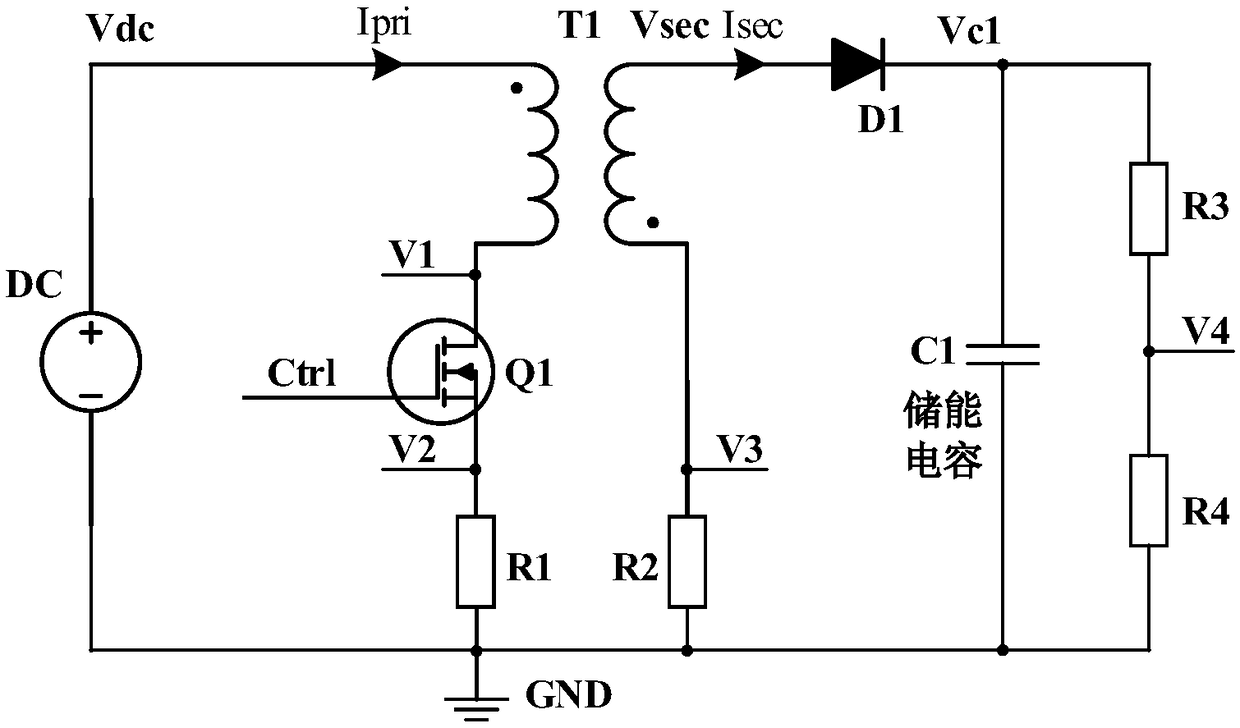A high-voltage charging circuit for controlling adaptive regulation of pulses
A technology of self-adaptive adjustment and high-voltage charging, applied in the field of medical devices, can solve the problem that the defibrillator cannot achieve the optimal charging effect, and achieve the effect of optimizing the charging process and fast charging
- Summary
- Abstract
- Description
- Claims
- Application Information
AI Technical Summary
Problems solved by technology
Method used
Image
Examples
Embodiment Construction
[0018] The present invention will be described in further detail below in conjunction with the accompanying drawings.
[0019] In the embodiment, the power supply voltage Vdc is set to be 5.0V, and the target charging voltage Vc1 of the energy storage capacitor is set to be 800V.
[0020] see figure 1 , The hardware circuit of the present invention is composed of four modules: a microcontroller 1, a control pulse adaptive adjustment circuit 2, a flyback high-voltage charging circuit 3 and an energy storage capacitor 4. The microcontroller outputs the charging control signal Charge, and when Charge becomes high level / low level, charging starts / stops. Microcontroller 1 outputs reference voltages Vref1-Vref4 through digital-to-analog conversion or control of the reference voltage source. The value of Vref1 is Vdc+20mV=5.02V, the value of Vref2 is 100mV, the value of Vref3 is -250mV~-10mV, and the value of Vref4 is is 2V. In addition, the microcontroller 1 monitors the feedback...
PUM
 Login to View More
Login to View More Abstract
Description
Claims
Application Information
 Login to View More
Login to View More - R&D
- Intellectual Property
- Life Sciences
- Materials
- Tech Scout
- Unparalleled Data Quality
- Higher Quality Content
- 60% Fewer Hallucinations
Browse by: Latest US Patents, China's latest patents, Technical Efficacy Thesaurus, Application Domain, Technology Topic, Popular Technical Reports.
© 2025 PatSnap. All rights reserved.Legal|Privacy policy|Modern Slavery Act Transparency Statement|Sitemap|About US| Contact US: help@patsnap.com



